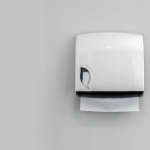Facial Skin Treatments
Warning: Undefined variable $post in /home/dietofli/public_html/wp-content/plugins/code-snippets/php/snippet-ops.php(584) : eval()'d code on line 3
Warning: Attempt to read property "ID" on null in /home/dietofli/public_html/wp-content/plugins/code-snippets/php/snippet-ops.php(584) : eval()'d code on line 3
The estimated reading time is 4 minutes
Warning: Undefined variable $post in /home/dietofli/public_html/wp-content/plugins/oxygen/component-framework/components/classes/code-block.class.php(115) : eval()'d code on line 3
Warning: Attempt to read property "ID" on null in /home/dietofli/public_html/wp-content/plugins/oxygen/component-framework/components/classes/code-block.class.php(115) : eval()'d code on line 3
For a long time, the only way to treat facial skin laxities such as drooping cheeks and jowls was facelift surgery. Skin resurfacing procedures could only help restore some degree of firmness to the skin but once it becomes loose, only surgery could completely remove it. However, not everyone is willing to rely on an injectable compound or undergo surgery. For those people, the thread lift procedure provides a perfect middle ground.
Wherever you live you can search online for “thread face lift” or if you live locally, visit Marina Medispa in Edgewater, NJ for aesthetic skin procedures, and anti-aging treatment options. (1)
What is a Thread Lift?
A thread lift is a safe procedure where temporary sutures are used to create a small but visible "lift" in the facial skin. Rather than being removed, portions of the loose skin are stitched and pulled back, lifting and tightening the skin. In addition to lifting the skin, the threads provoke the body's healing response, causing collagen to be directed towards the treated area combating aging in the process.
As we get older, the body produces less and less collagen, leading to a reduction in skin thickness, and loss of volume. This loss largely contributes to the creation of wrinkles and excess skin. Thus, fresh collagen in facial skin causes hydration and thickening, which prevents aging. Patients who've undergone a thread lift procedure notice a change in skin tone and firmness. The body's healing response is activated when the threads are in place, as the body tries to heal the sutured areas and remove the sutures.
Advantages of the Thread Lift Procedure
The greatest benefit of having a thread lift, as compared to a facelift, is the recovery time and convenience associated with the procedure. Undergoing a facelift procedure requires heavy sedation, and thus the patient must make arrangements to be driven home from the hospital, after the procedure. The patient will also need round-the-clock assistance from a caretaker for a few days at least, following a facelift procedure. If they have children, they will need to make arrangements for them to be cared for. In order to heal, facelift patients require a week or two.
On the other hand, recovery from a thread lift is comparatively easy. The patient can drive themselves back home and look after themselves after the procedure as thread lifts are performed under local anesthesia. The patient can also return back to work immediately, though a majority choose to take the day off due to redness, swelling, and some bit of soreness. Strong pain medication is rarely needed. The thread lift procedure is suitable for people with children at home, or those with demanding careers.
Thanks to their non-invasive nature, thread lifts are low risk. There's almost a zero percent chance of scarring, bruising, bleeding, and other complications. On the rare occasion that you experience irritations or infections, the sutures can simply be removed, returning the face back to its prior state. Lastly, since the procedure is easier to perform, it's also far more affordable than facelift surgery. (2)
Precautions to Take
Thread lift procedures are not particularly intensive, but patients still need to take a few minor precautions. You will need to apply moisturizers for at least a week after undergoing the procedure. During that time, ensure you don't rub your face too vigorously to give the skin sufficient time to heal. When sleeping, prop your head up slightly to avoid directly rolling over the face. Patients should maintain realistic expectations for thread lifts. The procedure is suited for patients with mild skin laxity.














